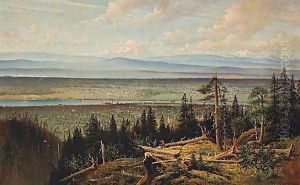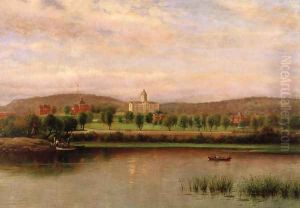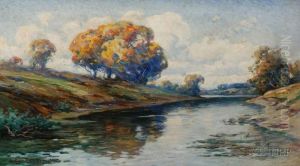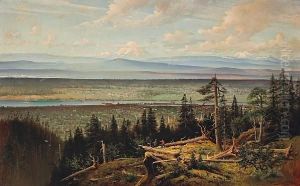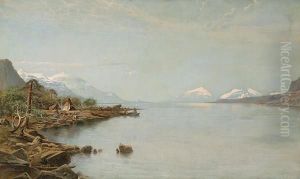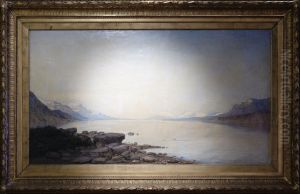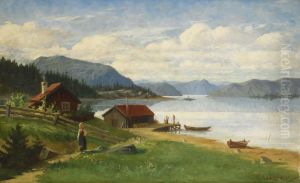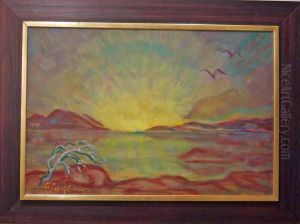Olof Jonas Grafstrom Paintings
Olof Jonas Grafstrom was a Swedish-American artist, known for his landscape paintings and for being an influential figure in the Swedish art community in the United States, particularly in the Pacific Northwest. Grafstrom was born on September 11, 1855, in Attmar, Medelpad, Sweden. He displayed a talent for art from an early age and pursued his passion by studying at the Royal Swedish Academy of Fine Arts in Stockholm, where he honed his skills in painting and drawing.
After completing his studies, Grafstrom immigrated to the United States in 1886, initially settling in Minnesota. His early work in the US included creating altar paintings for Swedish Lutheran churches. His artistry, deeply rooted in the Scandinavian landscape tradition, found a new expression in the vistas of the American West. In 1890, he moved further west and became a key figure in the arts community of Portland, Oregon, where he taught drawing and painting.
Grafstrom’s paintings often depict the vast and rugged landscapes of the Pacific Northwest, echoing the romantic and realist styles of the European tradition. He was particularly adept at capturing the atmospheric effects of light and weather, which added a moodiness and emotional depth to his work. His landscapes not only reflect the physical beauty of the American wilderness but also convey a sense of the sublime and the spiritual, a characteristic that resonates with the work of other late 19th-century landscape painters.
In addition to his landscape work, Grafstrom was also involved in the creation of panoramas, which were large, detailed paintings that provided a 360-degree view of a scene, and were popular forms of entertainment before the advent of cinema. He collaborated with other artists on these projects, which further enhanced his reputation.
Grafstrom's contributions to the art community extended beyond his own work. He was a respected educator, inspiring a generation of artists through his teachings. He influenced the development of art education in the region and was instrumental in the establishment of art institutions that would nurture the talent of future artists.
Grafstrom continued to paint and teach throughout his life, until his death on July 30, 1933, in Portland, Oregon. His legacy is preserved in the form of his numerous paintings that are part of collections in both the United States and Sweden, as well as in the lasting impact he had on the artistic community of the Pacific Northwest.
